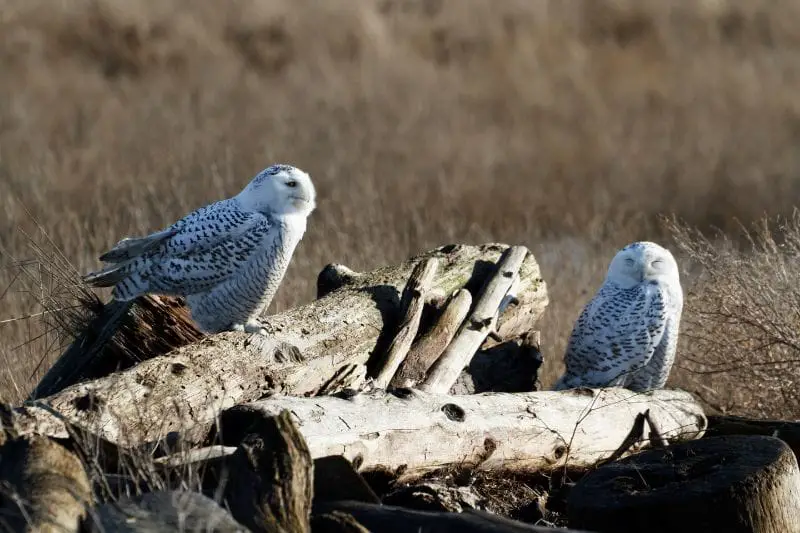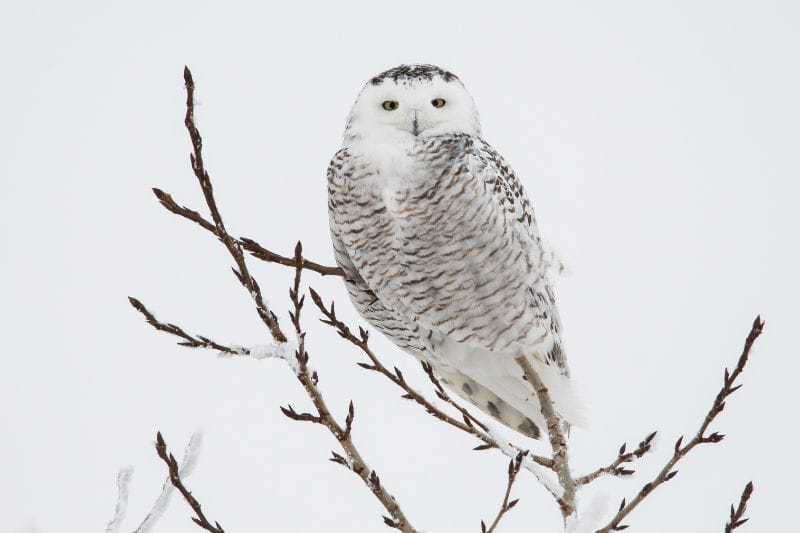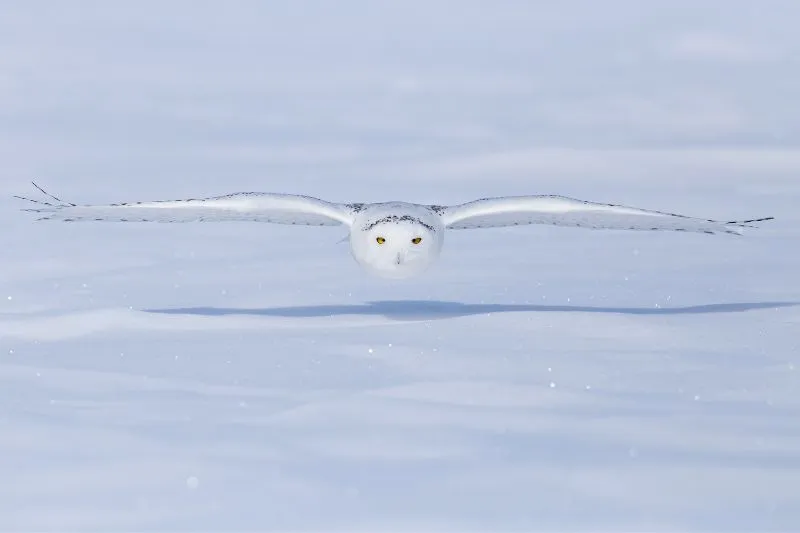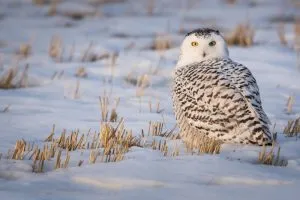Generally, birds do not hibernate in the famously known way that grizzly bears do. Instead, during harsh winter weather birds migrate to warmer climates. But, what about snowy owls which are well-adapted to extreme Arctic winters, do they hibernate or migrate?
Snowy owls do not hibernate during the winter but adapt to their surroundings by remaining active. However, snowy owls migrate to areas where food is more abundant in the winter and less hidden by snow cover. Unlike most birds, they do not undertake extensive migrations to other climate zones, although, in search of food snowy owls can occasionally migrate a long way from their summer breeding areas.
Keep reading to find out what places snowy owls migrate to and why, or if you’re curious to know how far they can fly in search of food.
Do Snowy Owls Hibernate or Migrate?
Hibernation is a state that some animals enter to cope with the harsh winter conditions and lack of food. During hibernation, animals reduce their heart and metabolic rate, have low-body temperature and breathe slowly, and generally use less or no energy as a survival technique against the cold1 (source: Britannica).
Like most birds, snowy owls do not hibernate. Instead, to survive the winter cold, they remain active and adapt to their habitat.
One such adaptation of snowy owls in the winter is that, unlike most owls, they hunt during the day when their prey is more active rather than at night when the prey is hiding from the freezing temperatures.
The migration of birds is when they undertake long-distance movements to a more suitable habitat, usually between breeding and wintering grounds. It occurs seasonally and is affected by food availability and climate conditions2 (source: Wikipedia).
Although snowy owls do not undertake regular long-distance migration in winter, they are highly nomadic birds that travel widely to find suitable areas where food is plentiful3 (source: F.I. Doyle, et al, Journal of Raptor Research, Vol. 51, No.4, 2017, pp.428–438).

Why Do Snowy Owls Migrate?
During summer, snowy owls inhabit open areas of the Arctic tundra, as well as river banks in valleys and terraces near lakes.
Summer is the breeding season for snowy owls and during this critical time they inhabit areas with a high abundance of their favorite prey – lemmings.
However, during the winter, lemmings are covered by snow making them harder to catch, so snowy owls move to areas in the south of the tundra where food is more abundant and prey is easier to catch.
For example, snowy owls go south to parts of the tundra where hares are more abundant or follow wintering ducks to the icy coastal zones4 (sources: E. Potapov and R. Sale, The Snowy Owl, 2013 and F.I. Doyle, et al, Journal of Raptor Research, Vol. 51, No.4, 2017, pp.428–438).
Snowy owls do not undertake regular long-distance migrations to other climate zones and typically stay in the arctic tundra. However, their quest for food may occasionally take them even further south to Canada and the northern parts of the United States.
This behavior is unpredictable as it depends entirely on food sources. When a large number of birds winter in a place they wouldn’t typically be seen, it’s called an irruption. Snow owls are often associated with irruptions and have been spotted as far south as North Carolina5 (source: Student Conservation Association).
This is often a nice surprise for locals who experience an influx of birds they wouldn’t usually encounter.
Where Does The Snowy Owl Migrate To?
Snowy owls undertake large nomadic movements from the nesting areas in the Arctic tundra heading south towards the northeast United States. Snowy owls are recorded to fly long distances from their summer ranges in Alaska and eastern Canada to open, tundra-like areas nearby New York and New England.
Snowy owls are also seen migrating along the St. Lawrence River and inhabiting The Belcher Islands both during the summer and winter months6 (source: G.J. Robertson and H.G. Gilchrist, Journal of Raptor Research, Vol. 37, No. 2, 2003, pp.164-166).
Additionally, snowy owls are observed migrating throughout northern Europe and central Russia in the winter, with occasional visits to Iceland and the British Isles7 (source: A. Robillard, et al, Journal of Avian Biology, Vol. 48, Issue 6, 2017, pp. 759-169).

How Far Can Snowy Owls Travel?
Snowy owls do not have a regular migration route or wintering areas that they visit every year. Instead, their migrations are sometimes characterized as irruptive, which is when large numbers of birds move to regions they wouldn’t usually be seen in – all due to the unpredictability of habitat resources like food.
In the Canadian Arctic snowy owls have been tracked to fly over large distances of up to 4093 km. A study found that in a year the areas being searched by snowy owls ranged from 220 to 2433 km8 (source: J.F. Therrien, et al, Journal of Avian Biology, Vol. 4, pp. 536-544, 2014).
Furthermore, snowy owls can fly as high as 150 m altitude9 (source: E. Potapov and R. Sale, The Snowy Owl, 2013).
Does Climate Change Impact Snowy Owl Migration?
Climate change can have an indirect impact on snowy owls through reduced numbers of their prey. A study in Greenland found that climate change has a negative impact on the lemming population, this has a knock on effect to their predators, including the snowy owls.
This study highlights how the impacts of climate change could indirectly lead to the breeding success of snowy owls around Northeast Greenland10 (source: O. Gilg, et al, Global Change Biology, Vol. 15, Issue 11, 2009, pp.2634-2652).
Another study in the Scandinavian Peninsula also suggests that reduced rodent population has resulted in a decline of snowy owls migrating to these areas during low years11 (source: K.L. Kausrud, et al, Nature, Vol. 456, pp.93–97, 2008).



![Read more about the article 15 Curious Facts About Snowy Owls [#10 Will Surprise You!]](https://polarguidebook.com/wp-content/uploads/2023/02/Snowy-Owl-Facts-300x200.jpg)

